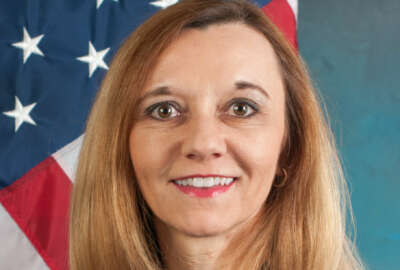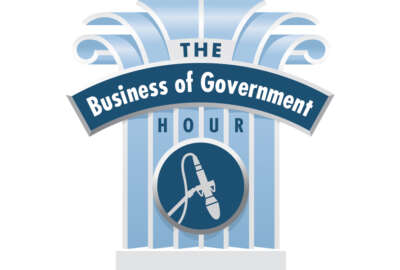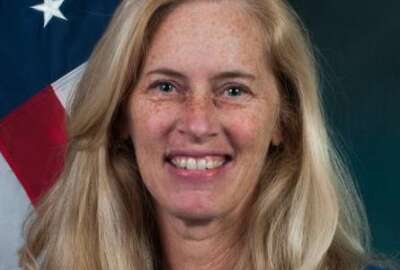
GAO examines major trends in government
The Government Accountability Office sometimes looks at the big picture. A case in point is its latest study on the big trends that will affect the government.
Best listening experience is on Chrome, Firefox or Safari. Subscribe to Federal Drive’s daily audio interviews on Apple Podcasts or PodcastOne.
The Government Accountability Office often gets way down in the weeds for its oversight work, who said what, when, chapter and verse on what part of the Federal Acquisition Regulation that wasn’t followed, dollars misspent using a federal credit card, month-by-month timelines for wobbly programs. But GAO also takes the big picture. A case-in-point is its latest study on the big trends that will affect the government. Federal Drive with Tom Temin talked to Steve Sanford, the managing director for strategic planning and external liaison at GAO.
Interview transcript:
Tom Temin: Mr. Sanford, good to have you on.
Steve Sanford: Great to be here, Tom. Thanks for having me.
Tom Temin: And my first question is about the Center for Strategic Foresight that you are part of at GAO. What is that? And what does it do there?
Steve Sanford: Sure. So foresight and thinking about the future is something that GAO has done for a long time, we’ve been doing it for decades as part of our strategic planning process. But back in 2018, with the support of the comptroller general, we created the Center for Strategic Foresight to enhance our ability to identify, monitor and analyze emerging issues as not only the issues, but also their implications for GAO, and the work that GAO does for Congress.
Tom Temin: All right, and how do you go about doing that work? How do you decide these are the trends that we all have to worry about?
Steve Sanford: First, you know, maybe say a few words about the center as well, you know, we have the center staffed from both internally with folks at GAO, who are experts in foresight. And we also have a network of non-resident fellows who in their own right are experts in foresight. We have an outside perspective that we bring to the table through the Center for Strategic Foresight, these are experts in government, academia, from the private sector and non-governmental sector. They’ve done foresight work, the World Economic Forum for the OECD, they run global training institutes focused on futures and future thinking. So we’re able to bring that brainpower to the table, as well as all the experts we have at GAO. And here’s the link to strategic planning. We’re one of the few agencies I’m aware of in the federal government that has a foresight office and strategic planning under the same roof. You know, they’re both in my office, we have the center, and we have our planning team. So we’re able to integrate the foresight work we do into our strategic plan. And those are the trends you see that emerge in the strategic plan.
Tom Temin: Right. So the implication is that GAO does a lot of work that is not directly requested by a congressional member, even though you do all of those. But there’s an agenda that is kind of goes alongside that just to make sure that Congress, your ultimate customer, knows everything it needs to know.
Steve Sanford: So, actually, the trends are really a reflection of of what we understand the future to be in terms of the oversight question we’re going to be asked by Congress. It helps us be ready and helps us make sure we’ve got the right people with the right skills in place to answer those questions to make sure we’re hiring data scientists, for example, or actuarial scientists or experts from the physical sciences and engineers to answer all those thorny questions about emerging technology and support the technology assessments we’re doing. So the trends really are about us being ready and anticipating the future needs of Congress and understanding how that landscape is changing and the types of questions they’ll be knocking on our door with. So in the development of the trends, we have a lot of internal experts, you’ve had them on the show. We’ve got folks with deep expertise across the whole federal enterprise. We talked to our internal experts, they’re in touch with Congress continually. And we also get outside perspectives and do our own research and bring those together. And the result is the trends that you see that accompany the plan.
Tom Temin: And do you feel that the methodology and the amount of expertise weighing in on this allows you to perhaps spot the occasional black swan, so to speak, that’s a word that gained currency when the pandemic hit, although shouldn’t really have been a black swan, but it nevertheless seemed like that, in other words, how do you make sure you’re not simply projecting the last five years, five years ahead?
Steve Sanford: So first of all, we’re not trying to predict the future with our trends. Any good foresight practitioner or futurists will say, you know, predicting the future is a fool’s errand. So we’re not trying to do that. But we are putting on the map important issues affecting policy, affecting government, affecting the types of oversight questions Congress will come to us with. And it’s interesting, you mentioned the pandemic. Over the last decades, if you asked almost any futurist or any expert in foresight what concerns them, a pandemic flu was almost always in the top five. And so it’s not so much that we don’t know some of these issues, but it’s a question of, to what extent are we planning holistically for them? Are we taking a systems-based approach? We’ve seen a number of shocks in the last decade or two, whether it’s financial crises or terrorist attacks like 911, or global pandemic, these are shocks to the system. Something like our trends document helps put on the table, some of the issues that we see continuing to evolve, and that could continue to affect policy questions in the future.
Tom Temin: We’re speaking with Steve Sanford, he is the managing director for strategic planning and external liaison at the Government Accountability Office. And looking at the list of things to think about in the future in your latest report, I want to ask you about a couple of them. And one is something you’ve mentioned before, that is GAO has mentioned before, and that is fiscal sustainability. And when Congress, if they asked you about that, I mean, the only answer is stop appropriating so much, which means the $5 trillion just spent or 4.6, whatever it is on pandemic relief, there was a couple of trillion back in the crisis of 2007, 2008, 2009 financial crisis, what’s your take on sustainability? And what are you telling lawmakers?
Steve Sanford: Fiscal sustainability and debt have been a mainstay of GAO’s forward looking work for decades. It’s been on the map, you can go back to some of our strategic plans, our 2000s strategic plan, for example, talks about fiscal sustainability. And one of the issues we see starting to change is, the amount of time that there is to make changes is shortening before some of these things become critical. So of course, the federal government, the Congress are going to do what they need to to get us through emergencies. And we’re coming out of an emergency right now. But as the pandemic recedes, and as the economy substantially recovers, we see that there’s going to need to be attention paid to strategies on starting to shift that long-term fiscal path. Debt is projected to have rising interest costs associated with it in the future, especially if interest rates rise in the long term. So that’s going to start crowding out even further the federal budget. And we’ve long been talking about the importance of health care costs. Federal health care spending, through social security and other programs that are taking up a greater and greater part of non-interest spending in the budget. So that’s going to continue to be an acute concern moving forward. And as you said, a lot of the emergency spending that we’ve seen in in recent years has, you know, added to those those concerns.
Tom Temin: I mean, fiscally, it seems like maybe the nation is like someone who’s jumping off a 50 story building at 37, 36, 35, 34. Things are fine.
Steve Sanford: Well, I think one of the key takeaways here is that the sooner actions are taken, the less drastic changes will need to be down the road. So if you imagine piloting a large cargo ship, or something of that nature, a small tweak early in the voyage can have a big course correction further down the road. And if that is done and done with enough lead time, it can make the types of changes that are needed less drastic than they might be done on an emergency basis in the future.
Tom Temin: And a related question that you have cited in this report is evolving health technologies, which could be related to spending outlays for health care that the government makes. But also in the ability of the nation as a whole, to be resilient, for crises and so forth. What are the concerns there with evolving health technologies?
Steve Sanford: As with a number of our trends, you know, they highlight trade-offs. We’ve seen through the COVID pandemic, for example, some of the incredible things that health technology can do. You know, rapidly rolling out innovative vaccines on a scale, and using technologies, and in a timeframe that folks before the pandemic would have said was impossible. So we’re seeing incredible leaps in technology. Gene editing is, you know, progressing as a technology. And there’s also the advent of AI and how artificial intelligence might be integrated with the healthcare system. So all of that has tremendous potential. But we also see that high technology and health also cost money, and that has the potential to increase costs. So there’s some trade-offs there, we can get some benefits, but we have to keep an eye on on what the ultimate costs might be associated with them. The other thing, too, is that right now, healthcare spending is growing faster than GDP. So that’s a as a sector, that’s a major chunk of your spending in the U.S. So it’s going to be crucial to understand how we can embrace these technologies as appropriate. Make sure that they’re appropriately taken into account issues of patient privacy and fairness, especially when we’re talking about artificial intelligence. So embrace them, but also understand what some of the implications might be on cost and fairness and make sure that that policies’ implementation take those into account.
Tom Temin: And briefly, who should read the report and take in all of these trends?
Steve Sanford: While we think everybody. We built a broad set of trends that cover a lot of different corners of federal operations. The other important thing I’d like to stress about the trends is they’re very cross-cutting in nature, you could pick one trend, and see its application to a lot of different programs and agencies and policy questions. And we work really hard to create that cross-cutting nature in our trends to highlight that these are actually complex issues. These are complex questions that are going to require, in some cases, some complex solutions. And understanding how they can spill over and influence one another and cross those silos, is one of the first steps to taking some wisdom from the trends and also making policies that take into account future uncertainty and future opportunities.
Tom Temin: All right, I wish we had hours to talk about so many of these racial and ethnic disparities, sustainable development, the list is pretty compelling. But we’re going to sign off now. Steve Sanford is managing director for strategic planning and external liaison at the GAO. Thanks so much for joining me.
Steve Sanford: Great being here today, Tom. Thank you.
Copyright © 2025 Federal News Network. All rights reserved. This website is not intended for users located within the European Economic Area.
Tom Temin is host of the Federal Drive and has been providing insight on federal technology and management issues for more than 30 years.
Follow @tteminWFED
Related Stories





